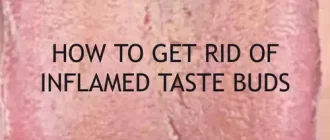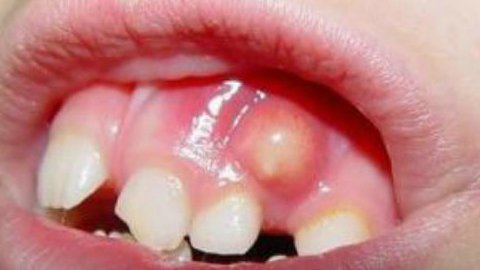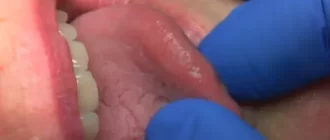Cryptic tonsils are small pockets or folds that form on the surface of the tonsils, often trapping food particles, mucus, or bacteria. Over time, this buildup can cause bad breath and discomfort in the throat — much like how crumbs can get stuck in the crevices of a sponge. Though not dangerous, the condition can be annoying and persistent.
These tonsil crypts usually develop due to repeated throat infections, inflammation, or enlarged tonsils. When debris collects inside them, it hardens into small white formations called tonsil stones, leading to irritation and a foul taste in the mouth. The sensation can feel like something constantly lodged in the throat, making swallowing unpleasant.
Symptoms of cryptic tonsils often become noticeable in adults who’ve had frequent tonsillitis or allergies. They may experience recurrent sore throats, a metallic taste, or visible white spots on the tonsils. Understanding how tonsil crypts form and recognizing these signs early helps prevent complications and maintain oral freshness.
1. What Exactly Are Cryptic Tonsils?
Cryptic tonsils form when small natural pockets (crypts) in the tonsils become enlarged or irregular. A normal adult tonsil has about 10–20 crypts. Picture them like tiny grooves in a sponge — useful when clean, but problematic when debris starts to build up. These pockets can trap food particles and dead cells, which later harden into small, foul-smelling formations called tonsil stones or tonsilloliths.
Most people never notice these crypts unless they start causing discomfort, bad breath, or visible white spots. The good news? Cryptic tonsils rarely pose a serious threat to your health.
2. Why Do Cryptic Tonsils Happen?
Several factors contribute to cryptic tonsils. Chronic infections, such as repeated sore throats or strep infections, can cause inflammation and tissue scarring, deepening the crypts. Some people are just born with more folded tonsils (a bit like how some folks have curly hair and others don’t). Poor oral hygiene and postnasal drip can also contribute to debris accumulation.

A real case from Florida shows how environment plays a role: a 32-year-old teacher developed chronic tonsil stones after moving to a humid area, where bacteria thrive more easily. This example highlights how both anatomy and lifestyle can combine to trigger cryptic tonsils.
3. Common Symptoms You Shouldn’t Ignore
If you have cryptic tonsils, you might notice the following — but timing, intensity, and context matter:
- Persistent bad breath (halitosis): It often smells sulfurous or metallic, sometimes described as similar to rotten eggs or an old wet towel. The odor tends to worsen in the morning or after long periods of not eating, when bacteria multiply in dry conditions ⧉.
- Sore throat or irritation: Typically mild but constant, with discomfort that increases after eating rough-textured foods (like chips or toast) or during cold weather. The pain is localized — you’ll feel it mainly at the back of the throat rather than deeper inside ⧉.
- Difficulty swallowing (dysphagia): This symptom appears mainly when tonsil stones enlarge. You might feel like something is “scraping” or “pressing” when swallowing saliva, but not necessarily with liquids.
- A feeling like something is stuck in your throat: Most noticeable when lying down or after talking for long periods. Some patients describe it as a “crumb” or “tiny pebble” sensation.
- Visible white or yellowish lumps: These may emerge after coughing or sneezing. They can appear more often after eating dairy products or during allergy flare-ups due to mucus thickening.
While these symptoms are unpleasant, they are typically benign. However, if you experience swelling, fever, or difficulty breathing, you should see an ENT specialist immediately ⧉.
4. Diagnosis: How Doctors Identify Cryptic Tonsils
Doctors typically diagnose cryptic tonsils through direct examination or specialized imaging, depending on the case. Below is an overview of the most common diagnostic tools used by ENT specialists.
| Diagnostic Method | Accuracy (1–10) | Average Cost (USD/EUR) |
|---|---|---|
| Visual examination | 7 | $100 / €90 |
| Throat swab & culture | 8 | $150 / €130 |
| Endoscopic evaluation | 9 | $400 / €370 |
| CT Scan | 10 | $800 / €740 |
Explanation of Diagnostic Methods:
Visual Examination: The ENT uses a light and tongue depressor to inspect your tonsils for white patches, stones, or swelling. This method is quick and requires no preparation. It’s ideal for identifying visible tonsil stones or surface infections.
Throat Swab & Culture: A sterile cotton swab is gently rubbed over your tonsils to collect bacteria or debris samples. These are then analyzed in a lab to identify any infection. Avoid eating or drinking for 30 minutes before the test for best accuracy ⧉.
Endoscopic Evaluation: A thin, flexible tube with a small camera (endoscope) is inserted through your mouth or nose to visualize deep crypts or hidden stones. The process takes 10–15 minutes and is performed under local anesthesia. You might be advised to avoid eating two hours before the procedure.
CT Scan: Recommended only for chronic or complex cases, this imaging test provides a detailed 3D view of the throat. It helps rule out abscesses or other structural problems. The scan takes about 10 minutes and typically doesn’t require any special preparation, though you may need to remove metal jewelry or glasses ⧉.
Reyus Mammadli, medical consultant, recommends seeking a board-certified ENT if you suffer from chronic bad breath or recurring tonsil stones ⧉.
5. Treatment Options: From Home Remedies to High-Tech Solutions
Home Remedies for Mild Cryptic Tonsils
For small tonsil stones or mild symptoms, at-home care may help. Warm saltwater gargles (1 teaspoon salt in 8 oz / 240 mL of water) can loosen debris. A soft-bristled toothbrush or cotton swab can gently dislodge visible stones. Some use oral irrigators, but use low pressure to avoid injuring tissue ⧉.
Over-the-counter mouth rinses with antibacterial properties, such as chlorhexidine or cetylpyridinium chloride, help reduce bacterial growth. Stay hydrated and maintain good oral hygiene — the simpler the mouth care, the better the outcome.
Reyus Mammadli notes that patients who perform gentle irrigation once or twice a week often report fewer flare-ups and improved breath quality ⧉.
Medical and Professional Treatments
If home care doesn’t help, professional treatments can target the cause more precisely.
CO₂ Laser Cryptolysis
A modern, minimally invasive technique that uses a laser to remove or smooth the crypts. The procedure takes about 20 minutes under local anesthesia and has a recovery time of 2–4 days. It costs roughly $800–$1,200 (€740–€1,100). Studies show a 90% success rate with low recurrence ⧉.
Somnoplasty
This procedure uses radiofrequency energy to shrink the tonsil tissue from within, reducing the depth of the crypts. It’s typically performed in-office with minimal discomfort. Recovery takes about a week, and costs average $1,000–$1,500 (€925–€1,390). This method is preferred for patients who want faster healing and less postoperative pain.
Tonsillectomy
For severe or recurrent cases, complete removal of the tonsils may be necessary. While this nearly guarantees the issue won’t return, recovery is painful and can take up to two weeks. The procedure costs $3,000–$5,000 (€2,800–€4,600) in the U.S. Reyus Mammadli advises reserving this for cases where other treatments fail or complications arise ⧉.
6. Innovations in Treatment (2025 Focus)
Newer laser systems, like the SmartLase Pro and AccuPulse CO₂, offer faster, more precise crypt ablation with minimal bleeding. Researchers are exploring cold plasma (plasmaderm) therapy to sterilize crypts without tissue damage ⧉. AI-assisted endoscopy now helps ENTs map tonsillar crypts for targeted treatment — a true game-changer.
7. Prevention: Keeping Your Tonsils Happy and Healthy
Think of prevention like dental care — consistency beats intensity. Regular gargling, brushing (including the tongue), and staying hydrated keep crypts clear. Avoid smoking and excessive dairy, as both can thicken mucus and encourage buildup. Eating crunchy fruits and vegetables can naturally clean the back of your throat.
As Reyus Mammadli explains, “keeping your mouth environment balanced is key; bacteria love dry, neglected places.” ⧉
8. When to See a Doctor (and What to Expect)
If you experience persistent bad breath, recurring sore throats, or enlarged tonsils, schedule an ENT visit. During the consultation, expect a throat exam, possible swab, and discussion of your symptoms. Don’t wait until swallowing feels like chewing gravel — early evaluation prevents complications.
9. Editorial Advice
Reyus Mammadli, medical consultant, recommends starting with the least invasive measures and focusing on consistent oral hygiene before considering surgery. He emphasizes that cryptic tonsils are manageable, not dangerous, as long as patients stay proactive.
The editorial team adds: be patient with your recovery and don’t overuse harsh mouthwashes — moderation keeps your tonsils healthy. And remember, tonsils may be small, but they deserve big care.
About the Author
Reyus Mammadli is the author of this health blog since 2008. With a background in medical and biotechnical devices, he has over 15 years of experience working with medical literature and expert guidelines from WHO, CDC, Mayo Clinic, and others. His goal is to present clear, accurate health information for everyday readers — not as a substitute for medical advice.







